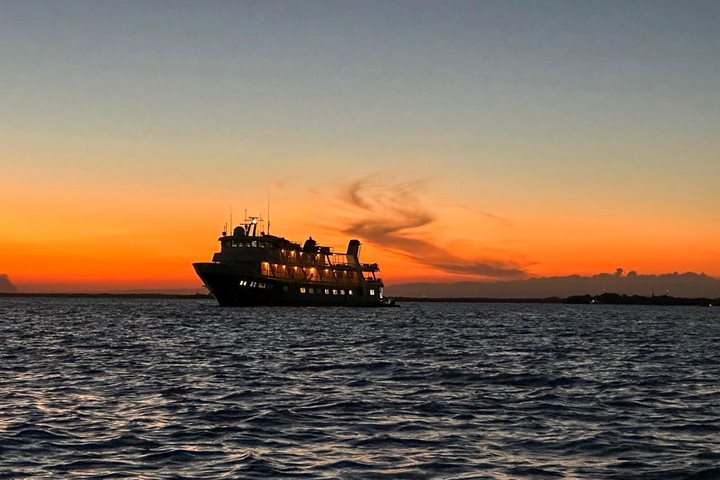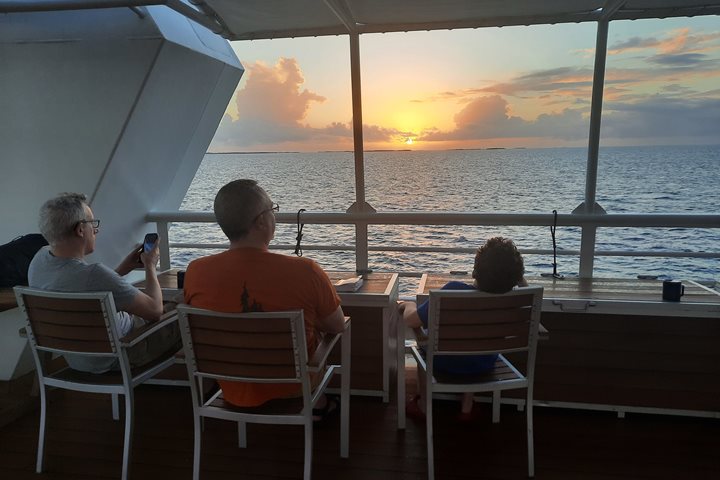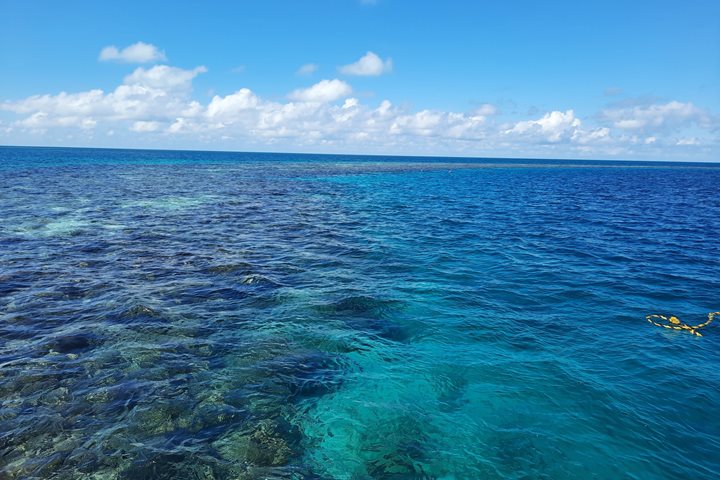We could not have asked for a better day! Light winds, sunny skies, crystal clear Caribbean Sea with 100’ visibility. Moho Caye was our first stop this morning and this postcard island surrounded by a fringing reef and cobalt blue waters did not disappoint. The tiny butterflyfish gracefully danced from coral patch to sea fan and through sand channels while cocoa damselfish ferociously guarded their tiny algae farms. Coral patches with gently swaying soft corals—sea plumes, Venus sea fans, and golden sea rods. Brightly colored sponges added their red, green, purple, yellow, and orange, not to be outdone. Tucked in the crevices of the Starlet Corals various sea urchins—reef, pencil, and long-spined waited patiently for nightfall and their turn to wander the reef. Squirrelfish, their huge eyes and predominantly red color indicating their nocturnal lifestyle also waited for nightfall to hunt their prey.
We spent the afternoon at Laughingbird Caye, a tiny island that sits atop the outer rim of the Laughingbird Caye Faro, a shelf atoll. What is a laughing bird? Well, years ago, laughing gulls nested here when it was just an island sitting in the middle of nowhere and occasionally used by fishermen from Placencia, a small village on the coast, eleven miles away. One third of Laughingbird Caye is now set aside for the gulls who had abandoned the island in the 1990’s due to increased visitation. Other birds like pelicans and ospreys are also nesting on the island and making a comeback. Other species of birds sighted by our passengers included ospreys, ruddy turnstones, brown pelicans, and yucatan vireos. National Geographic Quest passengers who went snorkeling saw many exciting fishes and corals as well as a cool Caribbean reef octopus. Some favorites of the snorkelers were the three butterflyfish – banded, foureye, and spotfin and of course, the stoplight parrotfish. While the kayakers paddled around Laughingbird Caye, a few just hung out in the brightly woven hammocks from Guatemala.









